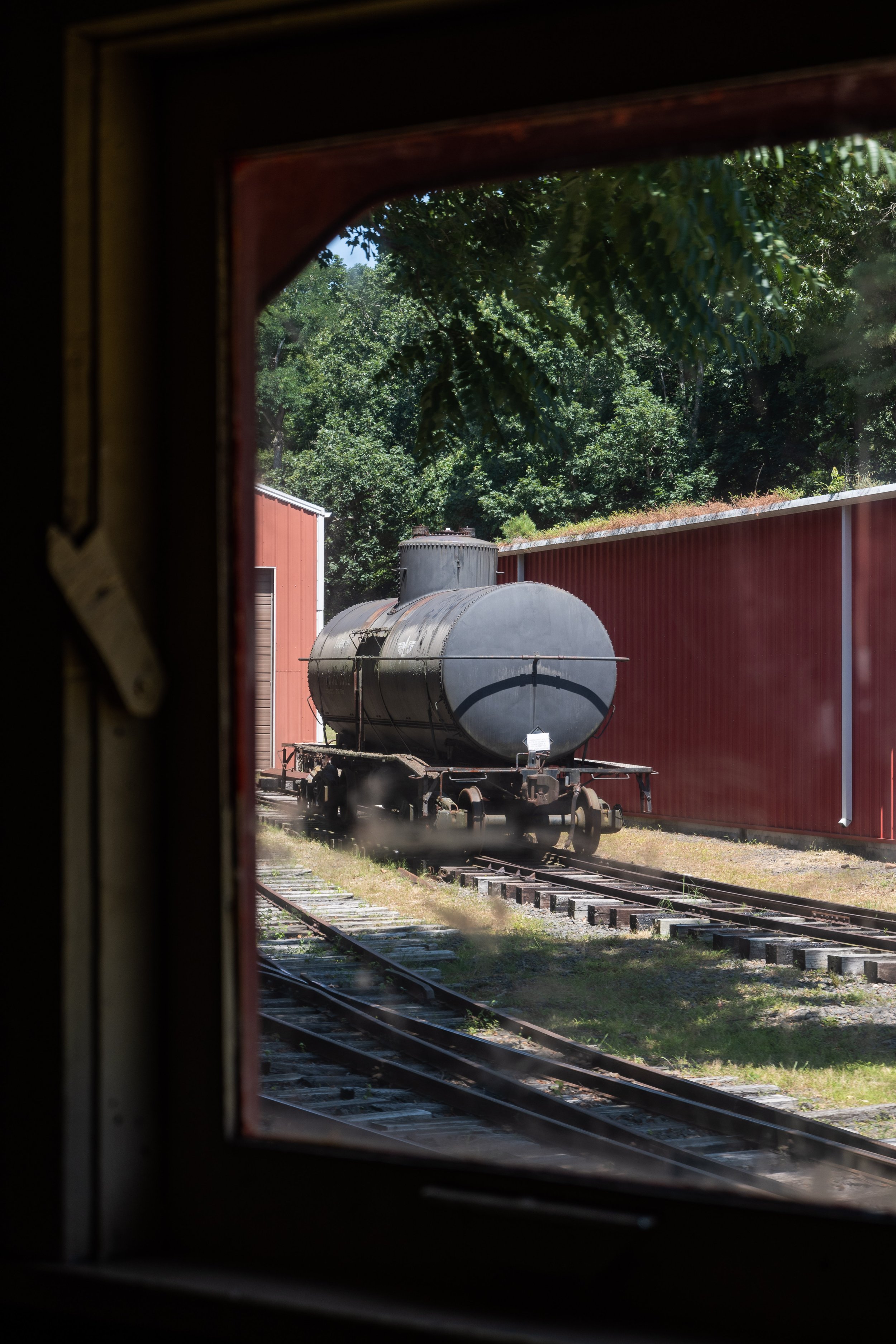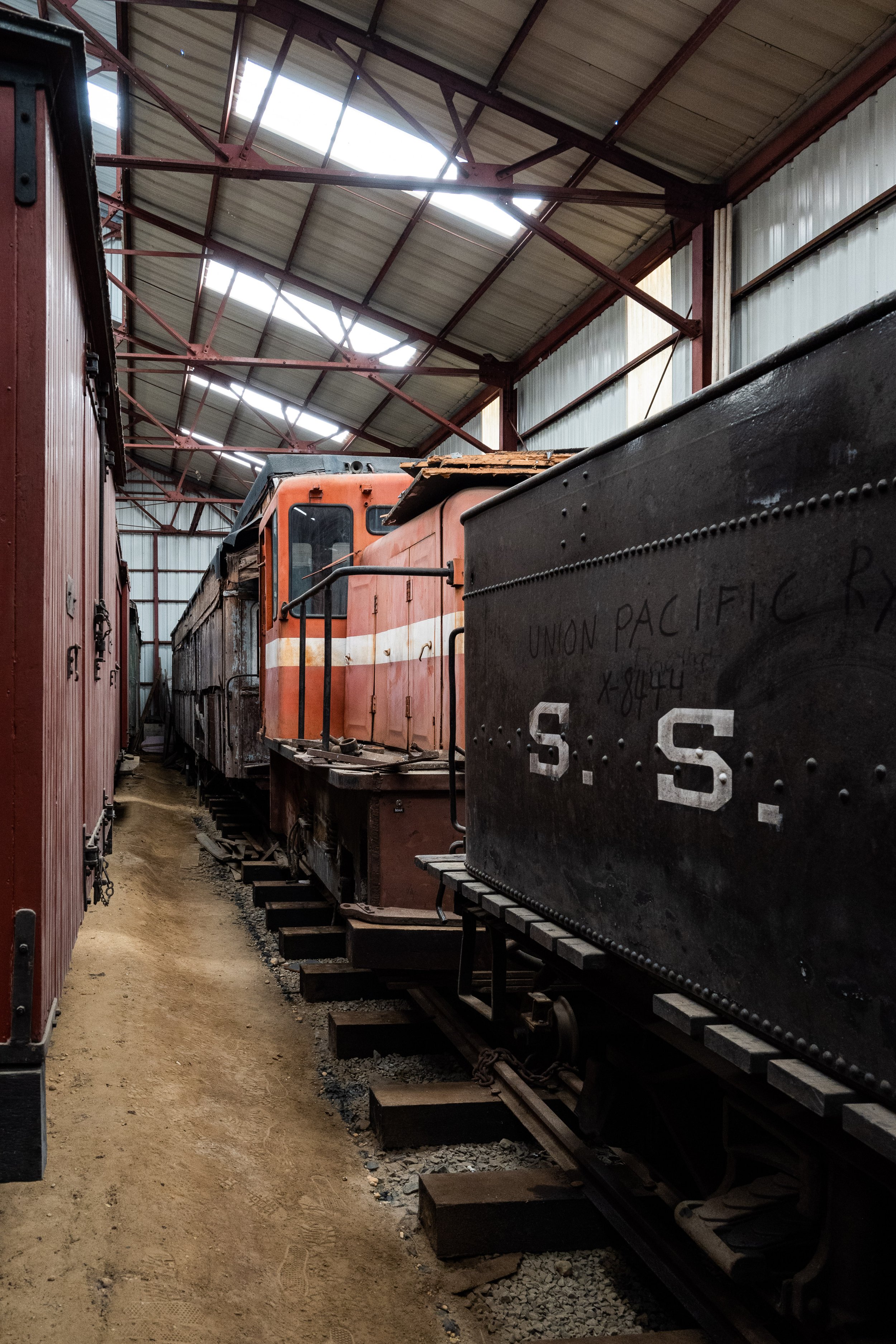The New Jersey Museum of Transportation is a narrow gauge railway that operates within Allaire State Park, though the museum isn’t financially supported by the NJ State Parks Department. They operate as a 50(c)3 non-profit and rely on both donations and train ride tickets to keep the things rolling. This wasn’t my first visit to the museum, but it was the first time I had a camera with me to document the experience.
Founded in 1952, the museum operates a loop track within Allaire State Park and owns a handful of historic building that were moved to the grounds, including the former Allenwood and Freneau train stations. Their collection spans both diesel and steam locomotives, though only the diesel locomotives are operative. The workhorse of the railroad, a WWII vintage diesel locomotive, was originally used to move ordinance around an army base in Hawaii. The train I rode consisted of this locomotive, an army munitions flatcar that was converted by the museum to carry passengers, and a Central Railroad of NJ caboose.
I was lucky enough to take a behind the scenes tour of the facilities with a few of the folks who volunteer with the museum. There are two main buildings where the museum maintains and restores their historic rolling stock - the workshop and car barn. Starting my tour in the workshop, I was introduced to a restored GE 50 ton locomotive that dwarfs the GE 25 ton diesel-electric that pulled my train around the .5 mile long track. A trio of these locomotives came from a US Steel plant, with one being fully restored by the museum and the others used for spare parts. A remotely operated model of the GE 50 ton which was used to work close to the heat of the steel furnaces sits in the car barn with the other inoperative locomotive.
Though in full working order, the restored GE 50 ton only makes a public appearances for special occasions. The weight of the locomotive puts excessive wear on the rails, which means more upkeep for the volunteers to contend with. Restoration projects going on around the workshop include the refurbishment of rail car trucks and the repair of a steam engine boiler, with the hopes of eventually bringing a steam engine from the museum’s collection back to life.
The car barn is a large storage area behind the workshop which holds many pieces of railroad history just waiting for their chance at restoration. Steam locomotives, Pullman cars, and railroad maintenance equipment are housed here in varying states of disrepair. A lot of the equipment now in the barn had suffered vandalism while being stored at the museum, back when things were kept in the open air. I’d particularly love to ride the Pullman car once it’s been fully restored. Some standard gauge railcars like the tanker pictured above are stored outside the car barn.
I was drawn to the green and yellow paint job of the Pine Creek Railroad locomotive below. The Pine Creek Railroad and the NJ Museum of Transportation are one in the same, though only this locomotive (from what I saw) has this detailed paint scheme.
Of all the projects just waiting in the car barn, the steam engines in particular will be quite difficult to restore because of the boiler work and subsequent state inspections required. The railroad is subject to many of the same regulations and insurance requirements larger carriers like NJ Transit and CSX must comply with. With an all volunteer force and a severely depleted operating budget caused by the COVID-19 pandemic, 2022 was the first year that semi-typical operations were able to resume. If you live in NJ, I think it’s worth your time to take a trip to Allaire to see both the historic village and the NJ Museum of Transportation. All the volunteers I spoke to were incredibly friendly, and I have to give them a shoutout for taking me on a “behind the scenes” tour of the museum.






